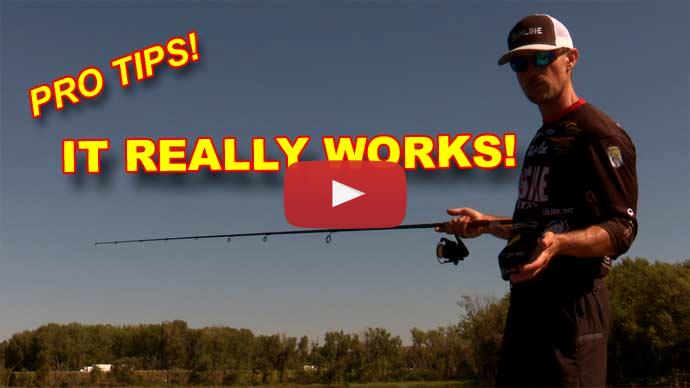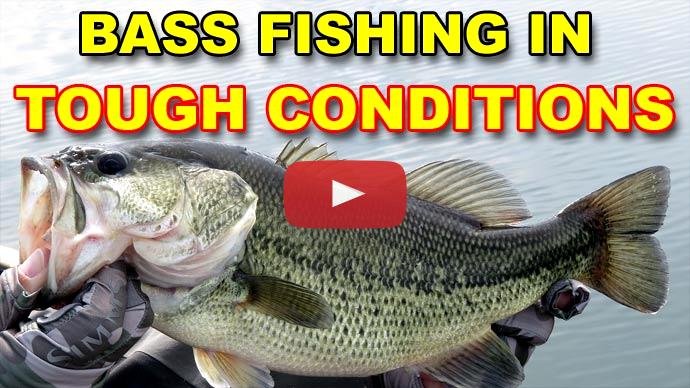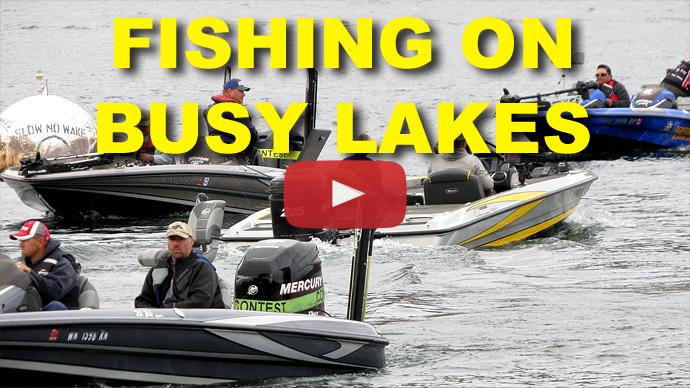You know, some of us may be lucky enough to have access to private ponds, but, typically, we don't. Us common folk, the ponds we fish are near or in urban areas, which means they get a lot of use and a lot of activity, not only from anglers but also from recreational folks who want to go swimming or take their kids out on little floaty stuff or maybe just kayakers and canoeists who just want to go and have a nice day on the water. At any rate, it's going to affect your fishing. Pressured waters are difficult to fish. So what do you do?
Well, first thing to do is if you've been on this pond for a while and you fished it, pay attention to the real busy peak times. For example, a real nice sunny day like this might bring everybody out of the woodwork. Oh, let's go swimming. Let's go break out our little inflatable mattresses and go floating around on the lake, and let's go fishing. It could be really busy.
Whereas, say, it might not be as busy in the morning or in the evening or, say, on weekdays. So, you might want to go fishing on those days, or maybe it's raining, or a real cloudy day, or maybe colder out. Those may be better days to go out and fish where you don't have as many people fishing this pond. It could also be... You could also fish at night. Now, you have to check your regulations, of course, because not all places allow you to fish at night. But some ponds, you know, public parks and such, sometimes they let you do that. So take a look at your regulations because that could be really good too. There's not very many people out there doing that. So that's one thing you can do.
Another thing you can do is pay real close attention to how stealthy you are fishing around the lake. That can make a big, big difference in catching fish. It really does, guys. So, for example, if you're fishing on a shoreline. You don't have to get right up to the water's edge to cast a line because the fish, they can see you. And so you don't want to be right up there spooking fish. Get away from the edge of the water, maybe 10, 15 feet. If you catch a fish, you can always drive right...or you can always get right up to the edge of the water and land them that way. But you don't have to be on the edge all the time.
Same thing when you move from spot to spot to spot. Back up away from the shoreline. Go around and then come back up to the shoreline instead of going straight along the shoreline because fish, they can feel that vibration, you stomping around and moving. They can feel that go through the ground, and it will alert them to your presence. So, back away from the shoreline. Walk around and reposition yourself. You can also use the shoreline for cover. If there's bushes and trees, maybe get up kind of behind those to help conceal yourself so the fish can't see you.
Also, what you wear is important. Wear clothing that's kind of muted colors that help you blend in with your surroundings, maybe a lighter color for a blue sky like this so you blend in with that versus a white. If it's really hot out and humid, those white jerseys are so comfortable to wear, but, man, you just make a cast, and that movement of that white arm, fish are gone. They're out of there, Jack. Gone. Pay attention to the color of your clothing. Especially if you're fishing, say, from a kayak or a canoe and you like to stand up, man, you got to wear clothing that really helps conceal your position because, again, bright colors really give you away and it spooks the fish. So, if you can, just stay seated down in your canoe or your kayak. It can help you stay a little bit more low profile. That way, you're just stealthy. That's the thing. Stealth approach is the key.
Another thing, a way to find your hot spots, great areas to fish, is to pay attention to the terrain around the pond. I know not all of us have access to a depth finder or for fishing from the shore. Yeah, they got some of those that you can cast out and use Bluetooth connection or Wi-Fi, and that might help a little bit, help you figure out what's below the surface. If you have a canoe or a kayak, you can add your depth finders on some of them, the more sophisticated ones. But some of us just don't have the money to buy those things. So, got to go back to the old school, the way I used to fish before depth finders really were around, before GPS was around. That is you use the terrain around you to understand what's going on on the water below. Here's a couple ideas.
So, where the water comes into a pond, for example, that's where a lot of sediment flows in, and, typically, it's shallower in that area of the pond versus on the opposite side. So that's important when the fish are moving up shallow and feeding or they're spawning. That could be a good area to go fish. But even as you look around, if the terrain is rather flat. It's gonna be that way under the water too. So it's long, sloping, tapering flat as it slowly gets to deeper water.
Conversely, if you got a sharp drop, like a hill that goes right into the water, that's probably deeper water underneath. Doesn't always happen that way. I've seen some real steep drops. I go up to fish it, and only 3 feet down it stops. But other times it's like...it's a nice steep drop. That's great when the fish, like, say, the summertime or when the fish are relating to steeper structure in the wintertime where they just want to move up and down and feed or maybe they're feeding on crawdads if there's a lot of rocks, say, for example, in that steep drop. Rocks, pebble, gravel, anything you see on the shoreline, it likely continues that underneath. Same thing with sandy bottoms, clay bottoms, hard bottoms, it's likely like that as it goes into the water. Points, they don't stop right at the water, they extend out into the water. Points are great places to fish. So pay attention to the terrain around the pond. It's gonna give you some good ideas of what to fish depending on time of year and other factors and weather, that sort of thing. But I like to start off with points myself because you can figure out what water column they're fishing or they're biting on and then target that water column the rest of the body of water. That's just my approach. But that can help you find some real hot spots in a hurry and avoid fishing dead zones.
Also, with a pressured area, pay attention to the lures you're throwing. For example, soft plastics. If this pond near ya has a lot of people fishing from the bank and on the shore and also fishing on the kayaks and whatnot, and you get a lot of fishing activity, I tell you what, these fish have seen every shape and form and size of soft plastic in green pumpkin that you can imagine. Get away from green pumpkin. Throw something else.
For example, if it's clear water, throw clear with metal flake or salt and pepper. An excellent color to throw is smoke with salt and pepper. I'm telling you guys, before green pumpkin became popular back in the day, I'm dating myself, but I'm telling you, every guy had smoke with salt and pepper plastics because that was what bit. Usually, on sunny days and clear water all the way to cloudy days and clear water, but smoke, salt, pepper was the color. When it got darker, dingier water or really rainy, cloudy days, then we went to motor oil. Those are the two colors everybody had in their tackle box. You don't see those very much anymore. So try throwing those instead of the green pumpkin or maybe deviate from that. Throw a tequila sunrise or a purple color or maybe electric blue or something with chartreuse, stuff that you don't normally see.
Same thing with hard baits. Maybe go... I used to throw a spinnerbait I called hippie color. I had all kinds of colors in it. It had green and purple and yellow and chartreuse and white and red and a whole bunch of just a collage of colors, and it caught fish sometimes in those pressured areas because that was a color the fish weren't used to seeing. Maybe you throw a spinnerbait with white blades or painted blades, some other kind of color.
With crankbaits, move away from the normal colors and deviate to something that's unusual. Firetiger is something that people use but not as much as your shads and your natural colors. I can tell you, I was fishing a heavily pressured lake in a tournament, and I used...it was purple and black crankbait, and the fish just beat the snot out of it until they broke it. It literally split it up, and we got water inside. It didn't work anymore. And I could not find, I still can't find that particular crankbait in that color pattern anymore because it was pretty rare. So try to find colors that don't follow the norm, that most people aren't throwing, and maybe upsize, or another way to do it is downsize.
You know, follow what the Japanese do. The Japanese, they fish heavy, heavy, heavy pressured water. This is where most of your finesse tactics came from and the free rig, Tokyo rig, Jika rig, all of these finesse tactics came from, from Japan and from Korea because of the heavy pressure. And finesse fishing with the small hand-poured, you know, that came from California, but also Japan, a lot of these finesse baits. So downsize to your... Your Westy Worm is something that hasn't been thrown in a while. If you don't know Westy Worm, look it up, but it's a small straight-tailed worm with two little hooks in it. That's something that we throw in Arizona and California and heavily pressured waters back in the day. They still make them. You can still find them, I don't think... Last I checked, Tackle Warehouse didn't have it. But, anyway, lures like that, your tube baits, 3-inch grubs. People don't talk about grubs anymore, but I'm telling you, they work, especially in heavily pressured situations.
So try those things out, and I guarantee you you're gonna have better results fishing public waters, especially those ponds that are in urban areas that get a lot of pressure. Hope that helps. For more tips and tricks like this, visit bassresource.com.



